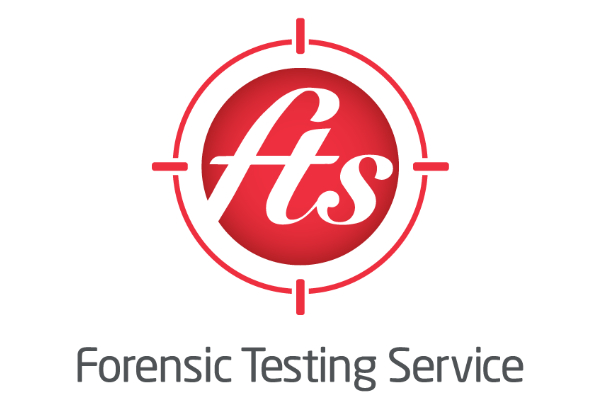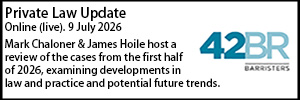Recovering adult social care charges via insolvency administration orders
- Details
Yisroel Greenberg explores the circumstances in which an insolvency administration order should be considered, summarises the legal framework, and offers some practical suggestions when considering applying for one.
Insolvency administration orders (“IAOs”) are a modified bankruptcy procedure where the debtor is the estate of a deceased person. The name reflects the fact that the order is one for the administration of the estate. In other words, the receiver so appointed takes over responsibility for the estate from any personal representatives, and deals with it as with the estate of a bankrupt person.
IAOs are rare. Anecdotally, I have heard from one of the district judges based at the County Court at Central London – a very busy court for bankruptcy work – that their court sees a single-digit number of these per year. However, in certain circumstances they can be an effective way to efficiently recover money from an estate. It is particularly apt to arise when dealing with adult social care debt under the Care Act 2014, and any lawyer working in this area should be aware of this remedy.
Why and when to consider an IAO
An estate which is ultimately insolvent while still having enough in assets to cover a non-trivial portion of its liabilities poses a problem. A typical scenario is that of an estate which has savings in a bank account of (say) £20,000 but owes debts of £40,000. Any executors or next-of-kin may justifiably conclude that it is not worth their while to take on the burden of administering the estate in those circumstances. But the creditor is likely to balk at writing off 100% of the debt, and will want to know what can be done to recover the 50%.
An IAO is a useful tool to deploy in these circumstances. It provides the cover of court authority for distributing any funds in the appropriate order of priority between creditors. It also avoids having to apply for a creditor’s grant to administer the estate, as the court has the power to proceed without any personal representative being appointed. Particularly in the local government context, it is uncommon for in-house legal teams to have the expertise and procedures in place to conduct probate work, whereas bankruptcy (and by extension IAOs) is more easily accessible.
It is particularly worth being aware of IAOs where the deceased co-owned a property as a joint tenant. As is well-established, ownership of the whole property will vest in the surviving joint tenant, leaving nothing for the estate. However, under section 421A of the Insolvency Act 1986, where the petition for an IAO was presented no more than 5 years after the death of the deceased, the trustee in bankruptcy has the power to apply to the court for an order requiring the survivor to pay to the trustee an amount not exceeding the value lost to the estate. In these circumstances, an IAO may be the only route to recovering the debt.
The downside of an IAO is that the Official Receiver will charge a fee out of any funds recovered, but this will nevertheless be the only or best available option in some cases and therefore worthwhile to avoid having to write off a debt.
Legal framework for IAOs
Identifying the legislation applicable to IAOs is surprisingly awkward. Section 421(1) of the Insolvency Act 1986 (“the Act”) states “The Lord Chancellor may, by order made with the concurrence of the Secretary of State and the Lord Chief Justice, provide that such provisions of this Act as may be specified in the order shall apply in relation to the administration of the insolvent estates of deceased persons with such modifications as may be so specified.” The Administration of Insolvent Estates of Deceased Persons Order 1986 (“the Order”) was made under that power and has been amended over time.
However, per the wording of section 421(1), the Order operates by listing sections of the Act which apply and any modifications subject to which those sections have to be read. Some of those modifications are obvious (e.g. any reference to “a bankruptcy order” becomes “an insolvency administration order”), but in other places Parliament simply declares that a section or subsection shall apply as if it said something else entirely (e.g. Schedule 1, Part II, para.16: “Section 289 as if for that section there were substituted the following…”).
The procedure for IAOs is as in Part 10 of the Insolvency Rules 2016 (“the Rules”). Although these are not expressly modified by the Order, para.3 of the Order provides that “the provisions of the Rules… shall apply accordingly”, and common-sense dictates that some of the modifications (e.g. “debtor” becoming “the deceased debtor or their personal representative”) apply in the same way as for the Act. The most important rules for these purposes are those in Chapter 2, Creditors’ Bankruptcy Petitions.
Applying for an insolvency administration order
Applying for an IAO is closely analogous to applying for a bankruptcy order. The details are contained in the modified sections 264-271 of the Act as supplemented by Part 10 of the Rules. This article is not the place to discuss at length the general process for bankruptcy petitions, but the following summary attempts to provide an overview and draw attention to points where IAOs differ.
A petition may be brought by one or more creditors, by the deceased debtor’s personal representatives, by the supervisor or someone bound by an IVA, or by the Official Petitioner or any person specified in a criminal bankruptcy order (section 264), using in each case the applicable form from Schedule 3 to the Order. The Administration of Insolvent Estates of Deceased Persons (Amendment) Order 2002 substituted new versions of several of the forms. The petition must contain the information required by Rules 10.7-10.9 of the Rules, but the forms are drafted in a manner which naturally complies with this.
The petition must be verified by a statement of truth (Rule 10.10). Although this can be contained in or endorsed on the petition itself, there is no space for this in the prescribed forms and it would have to be added separately. It is often convenient to make a separate witness statement (see Rule 10.10(3)).
The petition must be presented to the applicable court in accordance with the usual rules applicable to bankruptcy petitions (Rule 10.11). A court fee of £332 (Schedule 1, para.3.3 of the Civil Proceedings Fees Order 2008) is payable, along with a deposit of £1,500 for the Official Receiver’s costs (art.2 of the Insolvency Proceedings (Fees) Order 2016). For those who are used to using PBA accounts, it is worth being aware that the deposit cannot be paid this way and other arrangements will have to be made.
A petition shall be served on the personal representative unless the court directs otherwise (section 266). As discussed above, by definition it is often the case with insolvent estates that the persons entitled to be appointed as personal representatives do not trouble to do so as it is not in their interests. However, the power of the court to “direct otherwise” includes the power to proceed without any personal representative having been appointed (Ballard (Deceased), Re [2005] 12 WLUK 603; [2010] B.P.I.R. 149). The court may direct for the avoidance of doubt that documents are to be served on any persons who may have had an interest in the estate, even if they have declined to become involved (see section 266(1)(c)).
Obtaining an order to dispense with a personal representative is not a mere formality. Creditors should be prepared to demonstrate what steps have been taken to identify and invite the participation of the appropriate people. However, whilst all turns on the facts, the lack of any person able or willing to take out a grant of representation will powerfully support such an order, as will the relative simplicity of the estate and/or small number of creditors. While the court in Re Ballard expressly declined to suggest that it was setting any precedent, given that it dealt with an adult social care debt it is a useful example.
The court may make an IAO on a creditor’s petition if satisfied, in essence, that (a) the debt or one of the debts in respect of which the petition was presented is due, and (b) there is a reasonable probability that the estate will be insolvent (section 271). It is worth highlighting that this is a lower bar than that for a bankruptcy order: The court can make the order even if there is some uncertainty as to whether the estate is in fact insolvent, which is helpful given that creditors will frequently have incomplete information. Statutory demands are not applicable to IAOs, though of course the court will require some degree of evidence before it can find that the test is satisfied.
In practice, it is likely to be convenient to make a single witness statement verifying the petition, giving evidence as to contact with the persons entitled to be appointed as personal representatives, and giving evidence as to the estate’s assets and liabilities.
When the underlying debt is for contributions to the cost of care under the Care Act 2014, local authorities may wish to seek an order for indemnity costs so as to give effect to the entitlement to costs as of right under section 69(5). Of course, where the estate is short of funds, recovering more in costs simply means recovering less for the substantive debt. However, where there are multiple creditors and costs are paid before distributions to creditors, or where value lost to the estate is being recovered under s.421A such that the estate will end up in funds, an order for indemnity costs may make a real difference.
Once the order is made, the Official Receiver becomes responsible for the estate. Especially where there is no personal representative, they may well look to the creditor to provide initial information about the estate, and it is of course in creditors’ interests to assist in this. How long any distributions will take will vary, but experience suggests timeframes of 9-12 months are not out of the ordinary.
Conclusion
Insolvency administration orders are neither appropriate nor proportionate in all cases, which is no doubt the reason for their rarity. However, where they are both appropriate and proportionate, they fit an awkward niche and should have a place in lawyers’ toolkits. The main alternative is to apply for a creditor’s grant of letters of administration under rules 20 and 22 of the Non-Contentions Probate Rules 1987, but unless the creditor follows this up by applying for an IAO, they will be taking on the risk of other creditors emerging in due course. Although the court may make directions as to how the estate should be administered, following the process in Part 64 of the Civil Procedure Rules, an IAO is likely to be a simpler way to accomplish the same result.
Yisroel Greenberg is a lawyer at Ealing Council.














































